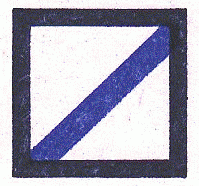No. 31 Beach Brick, RAF Component
No. 31 Beach Brick was the first of the Middle East beach bricks to be formed and was, on formation, named No.1 Beach Brick, being renamed No. 31 Beach Brick in May 1943. The battalion that formed the core of this Brick was the 7th Battalion Royal Marines.
The R.A.F. Component of the Brick was formed on the 13th April 1943 at Kabrit in Egypt, beginning with one officer (Flying Officer J R Johnson) and twelve other ranks. At the end of April, Flying Officer J Kevan and eight other ranks joined the unit and training began with the 7th Battalion Royal Marines.
A Unit Establishment of five officers and 35 other ranks had been authorised and with effect from 20th May 1943, Squadron Leader Robertson was posted to the Unit as Commanding Officer, arriving with Flight Lieutenants Blake and Richardson several days before this date.
S/Ldr Robertson went to the Headquarters, R.A.F. Middle East to clarify the duties and function of the R.A.F. Component attached to 31 Beach Brick and to determine what the establishment of stores and vehicles should be for the Unit.
On the 21st May 1943 a major exercise began. This was Exercise “DUCHESS” and the Personnel and Vehicle Assembly sections and the H.Q. section of the R.A.F. Component had a “looking on role” to note “where flaws arose in the exercise from the R.A.F. viewpoint”. No R.A.F. stores were landed during the exercise so it was not really possible for the R.A.F. Component to comment from the R.A.F. perspective and although the exercise was scheduled to last for 48 hours it was called off at 12:00 hours on the second day and the personnel returned to Kabrit.
On 24th May 1943 the R.A.F. Component moved with the 7th Battalion Royal Marines from Kabrit to Fayed and training continued.
Exercise “FOXHOLES” began on 3rd June 1943. By this time training was mostly completed except for the revision of “Stores Recognition” and “Route Marching” and so this exercise included a four mile route march in full assault scale kit. The exercise finished at 12:00 hours on 5th June.
For Exercise “BROMYARD BRIGHTLING”, beginning on 9th June 1943, the R.A.F. Component embarked on L.S.T. “Strathraver”, sailing on 10th June to Port Safraga. They arrived on the 13th June but the exercise was postponed due to bad weather and as it was no better on 16th June, the vessel sailed 60 miles north to Akabar. The exercise then took place and “Communications were found to be satisfactory but no R.A.F. stores were landed.” The exercise finished at 12:00 hours on 17th June.
Back in Fayed on 18th June, the R.A.F. personnel were allowed 48 hours leave.
On 29th June 1943, the five officers and 29 other ranks of the R.A.F. Component boarded L.S.T. Otranto at Suez. They left Suez in the morning of 1st July, passing through the Suez Canal and arriving at Port Said later that day. On the 4th July all 31 Beach Brick personnel marched to the authorised bathing beach.
On 5th July they sailed from Port Said in convoy. “No enemy activity was experienced with exception of 2 depth charges being dropped by escorting destroyer on a ‘possibility’”
Invasion of Sicily (Operation “HUSKY”)
No. 31 Beach Brick landed on the east of the Pachino peninsula in the area identified as “BARK” East, “NAN” Sector, consisting of two beaches known as Beach 51 and Beach 52.
From the point of view of the R.A.F. Component of No. 31 Beach Brick:
“Operation commenced at 02.45 hours on “D” Day 10/7/43. First Serials called up in LCAs at 00:25 left ship on course for shore at approx. 00:55 hrs. R.A.F. Personnel proceeded for shore in Serials 93 to 149 which through oversight or bad organisation on LSI Strathnaver were not sent ashore until a considerable delay had been incurred. A Tannoy system on board & all practices previously carried out for landing were abandoned & an attempt to call troops was made by runner. Serial No. 93 did not disembark until 09:00 hrs to land at approx H + 7. Shelling had ceased by this time & the Component experienced very little small arms opposition.”
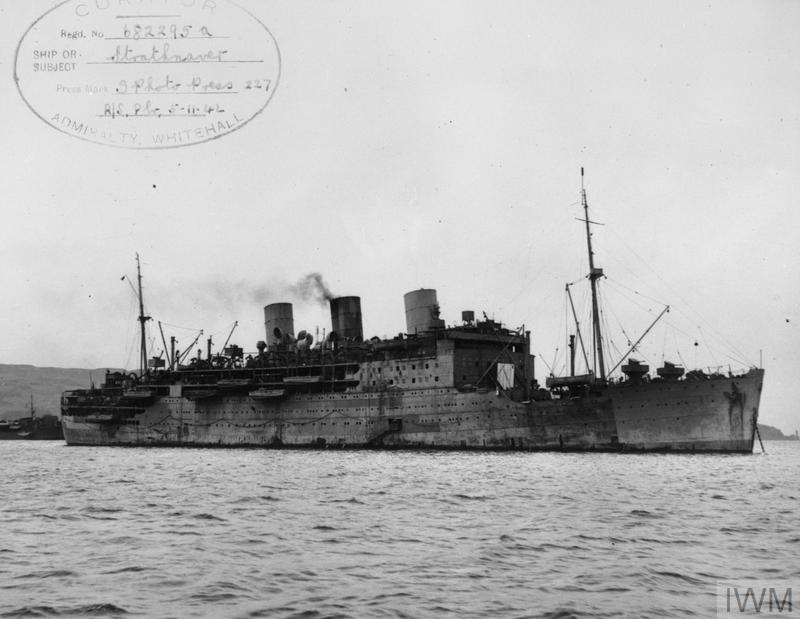
Photograph by J. Hall of Gourock, dated 5th November 1942
© IWM (FL 19393)
At 10.00 hrs the Commanding Officer, S/Ldr Robertson arrived at Brick H.Q. and the sections of the R.A.F. Component reported themselves fully operational at the following times:
- M.T. Assembly Area approximately 10.45 hrs.
- P.O.L. 11.05 hrs.
- Personnel Assembly Area 11.30 hrs.
- Explosives 11.45 hrs.
Stores began coming onto the beach at 11.00 hrs, in small quantities. The sections consolidated their positions and began to prepare dumps. The sites were reconnoitred by S/Ldr Robertson and those that he thought were practical were laid out.
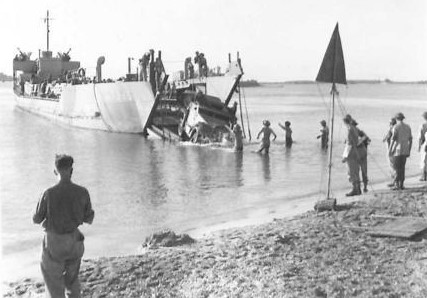
Photograph taken on 10th July 1943 by Sgt. Rooke,
No. 2 Army Film and Photo Section, © IWM (NA4506).
An air raid began at 22.00 hours. The balloon equipment, heavy aerodrome equipment, equipment of 2925 A.A. and the Servicing Commandos that were due to be landed had not come ashore by midnight.
The personnel and vehicles of 19 R.A.F. units passed through the Personnel and M.T. Assembly Areas to the Landing Ground and other destinations during D-Day and D + 1. The Landing Ground in question was the Pachino airfield captured by the Canadians on D-Day.
On the 12th July (D +2) Wing Commander Hackett of 103 Sub Area visited S/Ldr Robertson. The 16.00 hrs return of Stock In Dumps to A. A. H.Q. and R.A.F. H.Q., D.A.F. showed 7,708 gallons of 100 Octane Aviation Fuel and 60 gallons of 77 Octane. During the day approximately 7,300 gallons of 100 Octane had been issued to the Landing Ground. 1¼ tons of explosives were discharged over the beaches, all of which was re-issued to the Landing Ground. The day closed with an air raid lasting from approximately 20.30 hrs to 01.00 hrs. The anti-aircraft barrage was intense and balloons were deployed in the beach area.
From D+2 to D+15 (12th July to 25th July) the R.A.F. Component of 31 Beach Brick worked in the beach area, recording daily totals of the petrol, oil and explosives it received, held in dumps and issued to the Landing Ground.
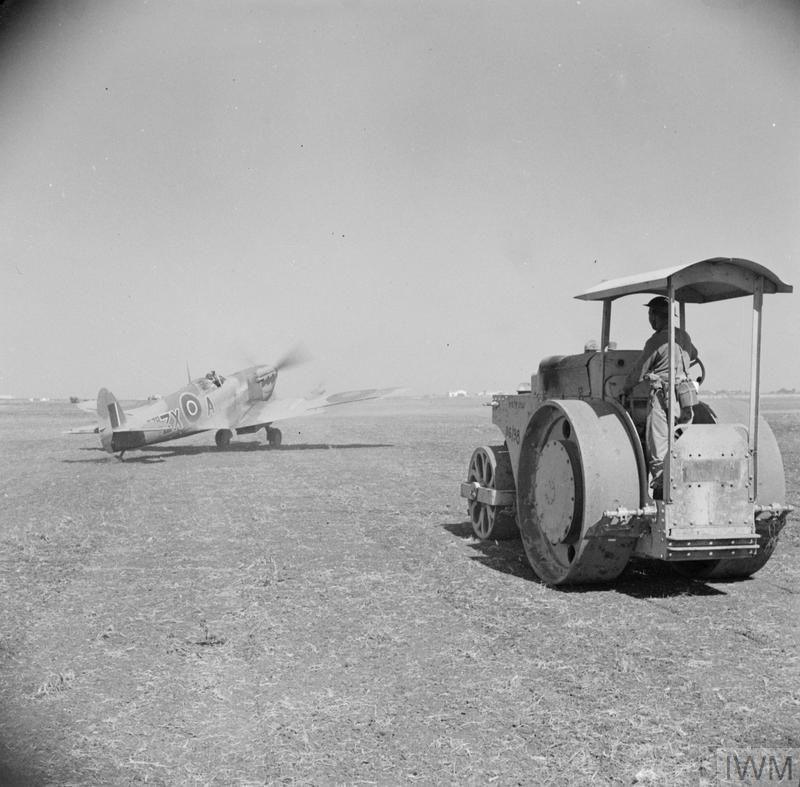
Photograph by Lt. Alan Wicker, No. 2 Army Film and Photo Section.
© IWM (NA 4293)
By D+15 the movement of these commodities had ceased and all their dumps were cleared. On that day half of the unit’s personnel were given 24 hours stand down and on the next day (26th July) the remaining half of the unit’s strength of five officers and 34 other ranks was stood down.
From 27th July to 31st July there was “Nothing to report” and,
“During the whole of August with Dump Stocks Nil, the Unit rested. It was possible during this period to obtain a 15cwt vehicle from 121 M.U. also some much needed cooking utensils and camp equipment.”
Operation “BAYTOWN” and Operation “AVALANCHE”
On the 2nd September the Unit was ordered to move to Santa Teresa di Riva for embarkation duties, with the Commanding Officer reporting to H.Q. D.A.F. en route. They borrowed two 3 ton trucks from No. 3204 R.A.F. Servicing Commando Unit and left at 06:00 hours the next morning. The C.O. reported to W/Cdr Fearne, D.A.F. at approximately 09:00 on the 3rd and learned that the unit was to embark R.A.F. units at Santa Teresa di Riva for landing on the toe of Italy (Operation “BAYTOWN”). A 3 ton truck that had been allocated to the Unit was collected.
Arriving at Santa di Riva around 18:00 hrs, the Unit set up camp at No. 200 Transit Camp. Next day, 4th September (D-Day for Operation “BAYTOWN”), the C.O. established his Headquarters at “No. 257 the main street, Santa Teresa Di Riva” and the Unit began work embarking R.A.F. units for the toe of Italy.
On 5th September with the Unit working to full capacity in Santa Teresa Di Riva, S/Ldr Robertson made a visit to mainland Italy to obtain first hand information about the loading and discharge of personnel bound for the toe of Italy. F/Lt Richardson mad a visit to the mainland the next day.
S/Ldr Robertson visited Air H.Q. Desert Air Force on the 8th September regarding movement of the Unit. On the 10th September F/Lt Richardson moved to Syracuse with one senior N.C.O. and five Airmen. Three days later the main part of the Unit was moved to Messina. W/O Kendrick and 12 Other Ranks arrived in Messina and the next day, S/Ldr Robertson was admitted to 58th General Hospital. W/O Kendrick assumed temporary command of the R.A.F 31 Brick detachment at Messina.
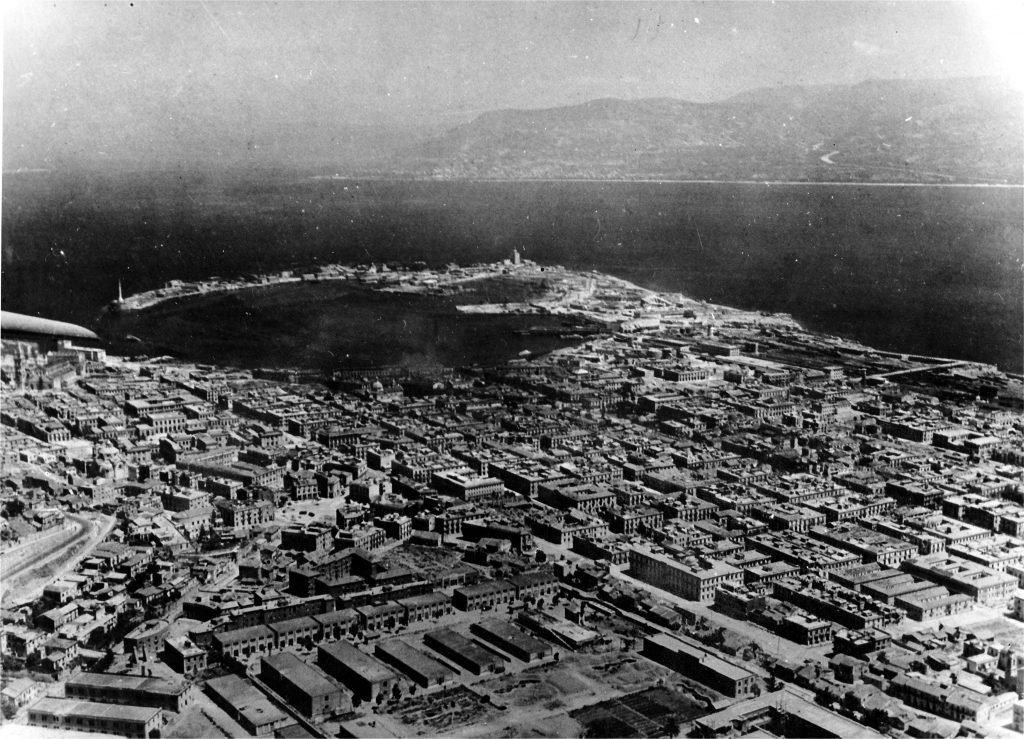
(from a print issued by the Ministry of Information, Middle East in 1943)
Between 13th September and 26th September, a period of 13 days, approximately 2,046 vehicles and 8,500 personnel were embarked by the Unit at Messina. “The one vehicle and three motor-cycles, the set of cooking utensils and the one cook had to be divided between the unit sections at Calling Forward Post, and the Main Embarkation Office, Messina.”
When S/Ldr Robertson was discharged from hospital on 26th September, he and seven Other Ranks moved to Catania (following telephoned instructions from W/Cdr Fearne, D.A.F.) to take over duties from No. 2 Embarkation Unit in that port.
Billets previously used by No 2 E.U. were inspected by S/Ldr Robertson the next day and taken over as billets for the Unit personnel. The Unit began full working duties at Navy House, Catania, operating as No 2 R.A.F. Embarkation Unit, Catania.
Three days later, on the last day of September, F/Lt Richardson arrived with a Unit detachment from Messina consisting of Sgt Green, Cpl Southall, LAC Simpson, A/C McCarthy, A/C Thornley and A/C Horsey.
On 1st October 1943, the Unit strength was 2 Officers and 28 Other Ranks.
1 Officer and 6 O.R’s were now stationed at Taranto, 9 O.R’s were at Messina and the C.O. and 13 O.R’s were at Catania. The work of the R.A.F. beach units for Operation “BAYTOWN” and Operation “AVALANCHE” was drawing to a close.
On 21st October, the Unit handed over their R.A.F. Embarkation Unit duties to No. 75 Embarkation Unit. The following day, Unit personnel were granted six days leave on a 75 per cent basis, so that 25 per cent would be available for duty. Three days later, on 25th October, Wing Commander George visited the Commanding Officer and then interviewed all the Unit personnel who were present. All the men were asked if they wished to volunteer for further Combined Operations and a posting to one of the newly formed R.A.F. Bricks. If not, they were asked if they had any preference regarding other types of Unit to which they might be posted.
The Unit was disbanding and personnel began to be posted to other units. In accordance with a letter received from Headquarters N.A.T.A.F. (ref TAF/1580/1/Mov) dated 29th October, 1943, postings of F/Lt Richardson (75866), Sgt House and LAC Paterson were authorised. Instructions dated 3rd November (ref TAF/1580/1/Mov) covered the posting of W/O Kendrick and 11 other personnel to No. 67 Embarkation Unit. Sgt Arthur and 7 other personnel were instructed to proceed to Brindisi for re-direction to No. 82 Brick, Cpl Dodd was to go to H.Q. Unit N.A.T.A.F., Bari and LAC Pollard, and A/C Hitchcott were posted to No. 61 Embarkation Unit, Naples.
On 17th November 1943, the Unit vacated the premises occupied at No. 108 Via Galerno, Catania “and proceeded by road to Naples via Messina Ferry and coast road”. These last words in the Operations Record Book are written in the hand of the C.O. who signs the final sheet,
T G Robertson
Squadron Leader, Commanding.
No 31 Beach Brick R.A.F. Component.
S/Ldr Robertson was appointed Commanding Officer of the new R.A.F. Beach Group.
Main source used for this page:
Operations Record Book of No. 31 Beach Brick (R.A.F. Component) – found in, ‘Air Ministry and Ministry of Defence: Operations Record Books, Miscellaneous Units’ AIR 29/438 at The National Archives.
